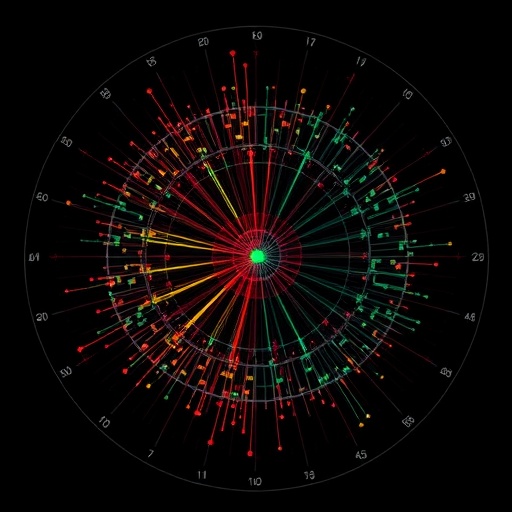First-in-kind study co-authored by UMass Amherst epidemiologist advances knowledge of diabetes’ biological roots

Credit: UMass Amherst
In the largest study of its kind in any non-European population, an international team of researchers, including a University of Massachusetts Amherst genetic epidemiologist, has identified new genetic links with type 2 diabetes among 433,540 East Asian individuals.
The findings, published in Nature, “provide additional insight into the biological basis of type 2 diabetes,” says co-lead author and statistician Cassandra Spracklen, assistant professor of biostatistics and epidemiology in the UMass Amherst School of Public Health and Health Sciences.
Spracklen served as a post-doctoral fellow at the University of North Carolina (UNC) at Chapel Hill during the research. “How diabetes comes about in different populations can occasionally vary in subtle but significant ways,” she says. “With studies like these, we are able to come at that question a little better.”
Ultimately, the goal is to identify potential genetic targets to treat or even cure the chronic metabolic disorder that affects and sometimes debilitates more than 400 million adults worldwide, according to the International Diabetes Federation.
The international team of more than 100 researchers was led by scientists at five institutions in Singapore, the U.S., South Korea, United Kingdom and Japan. The research was funded by more than 30 governmental sources and foundations.
“Such a large-scale study would never have been possible without the commitment and dedication to collaboration among so many scientists around the world, especially in Asia,” says Karen Mohlke, professor of genetics at the University of North Carolina at Chapel Hill School of Medicine and one of the study’s senior authors. “The data this team collected and analyzed has provided the research community with much-needed new information about the biological underpinnings of diabetes.”
The other senior authors are Xueling Sim of the National University of Singapore; Dr. Bong-Jo Kim of the National Institute of Health in Cheongjusi, South Korea; Robin Walters of the University of Oxford, United Kingdom; and Dr. Takashi Kadowaki of the University of Tokyo, Japan.
The new research – which analyzed data from 433,540 East Asians, including 77,418 with type 2 diabetes – emerges from the consortia known as AGEN (Asian Genetic Epidemiology Network) and DIAMANTE (DIabetes Meta-ANalysis of Trans-Ethnic association studies). Such large-scale genome-wide association studies in diverse populations have the potential to uncover the genes, biology and pathways related to diseases.
DIAMANTE includes five ancestry arms – African, East Asian, European, Hispanic/Latino and South Asian. The analysis of genetic variants in some 900,000 individuals of European ancestry was published in 2018 in Nature Genetics.
In the new analysis of East Asian individuals, researchers used genome-wide association data from 23 cohort studies to examine type 2 diabetes risk in East Asian individuals, identifying 301 distinct association signals at 183 loci, or specific positions on a chromosome. Sixty-one of the loci were newly implicated in the predisposition for type 2 diabetes.
These findings expand the number of genetic variances associated with diabetes and highlight the importance of studying different ancestries. “For many years, these studies have been done primarily in white European populations,” Spracklen explains. “There are DNA variants that are seen in some populations and not in others. Learning about the additional variants can help identify additional genes that influence a person’s risk for developing type 2 diabetes.”
That could help explain, for example, why among people of similar body mass index (BMI) or waist circumference, the prevalence of type 2 diabetes is greater in East Asian populations than in European populations.
The next steps are to combine discovery across populations and to experimentally determine which genes are altered by the genetic variants and how those alterations lead to disease.
###
Media Contact
Patty Shillington
[email protected]
Related Journal Article
http://dx.





